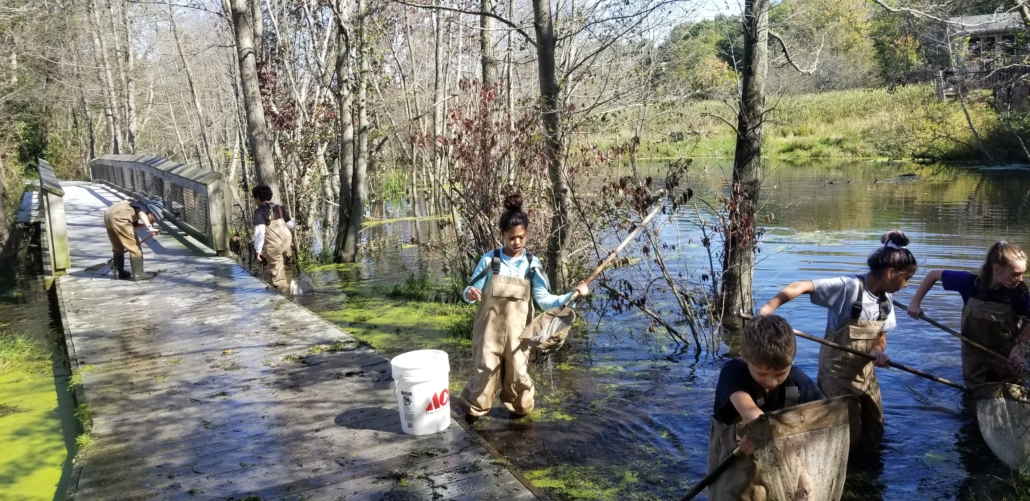By Sarah Barney, eco-journalist intern and student at Denison University
Teach for the Watershed (T4W) is a place-based education program that was founded by the WMEAC education department in 2015. Through T4W, WMEAC is creating a generation of advocates for healthy Great Lakes. Kyle Hart, Education Programs Manager for WMEAC, visits 6th grade classrooms around West Michigan to teach hands-on outdoor education. T4W is built upon the Michigan Science Standards and Next Generation Science Standards that educate students about watersheds, ecosystems, and non-point source pollution. Students will learn and see first-hand how their actions affect the health of their local watersheds and neighborhood.
But first the program begins in the classroom with Hart or other T4W staff members leading a presentation and activity. The students get a chance to explore an Enviroscape Watershed model that illustrates how water flows through our environment, and subsequently shows how non-point source pollution enters and contaminates the watersheds around us.
“So, all the rain that falls on their communities… whether that rain will go into a creek or directly into the river, will eventually make it into the Grand River and then into Lake Michigan. In the classroom, we talk about pollution the students see in their community, where it is coming from, and how that negatively impacts our environment,” says Hart.
After the classroom, Hart picks a location of a creek in their local watershed, typically a tributary to the Grand River. The students then venture into the field to participate in more hands-on activities to discover the quality of the water and put their knowledge to work. By using chemistry kits, microscopes, waters, nets, and sampling macroinvertebrates the data collected during the field trip can be used to estimate the health of the waters.
Unfortunately, due to the COVID-19 pandemic, WMEAC was unable to do T4W’s in-person learning and activities.
“We talked about it in the summer of 2020 and knew that in the fall it wasn’t optimistic for us to be able to return to in person programs,” reflected Hart.
A handful of classes still wanted to participate in T4W, so when Grand Valley State University offered to help create a virtual option, Hart jumped on the opportunity. They created a video series of Hart walking through the field work as a substitute for the real thing. The five-video series explains the basics of watersheds, ecology, chemistry, and freshwater streams. Hart doesn’t leave anything out; he explains how to use each of the chemistry tests, the proper method for sampling for macroinvertebrates, and even how to visually assess the quality of the stream by examining its banks and surrounding area.
With Hart’s knowledge and experience in the field and Grand Valley’s videography skills, teachers were able to show the series in the class for the spring of 2021.
Hart has high hopes for continuing video series with Grand Valley in the future. With the pandemic, there is an ease of deploying virtual content and content is more accessible. Also, it can be very labor intensive and expensive for school to go on field trips to a creek. Schools that are out of the district of the grant-funded T4W program that want to participate, but cannot cover the costs will finally be able to bring these resources to their classroom. Hart also hopes to expand to all different age groups instead of just middle school.
To check out the videos check out the WMEAC YouTube channel or to learn more about Teach for the Watershed click here.


